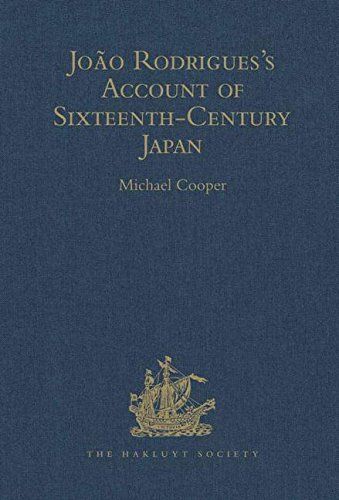
João Rodrigues's Account of Sixteenth-Century Japan
João Rodrigues sailed from Portugal to Japan in 1577, and there entered the Jesuit novitiate and was ordained priest. He met Toyotomi Hideyoshi, the virtual ruler of Japan, in 1591, and from that time became the missionaries' spokesman in dealings with Japanese authorities. He was also involved in negotiations concerning the bulk sale of Chinese silk in Japan, and commercial and political rivalries led to his eventual expulsion from the country in 1610. Rodrigues spent the rest of his life in Macao and the interior of China, dying in 1633. Renowned for his fluency in spoken Japanese, Rodrigues earned a place in the history of Japanese-European cultural relations by publishing a Portuguese grammar of the Japanese language (Nagasaki, 1604-1608), followed by a revised edition (Macao, 1620). Both works provide valuable information about Japanese spoken in the early 17th century. Rodrigues also provided the draft used as a basis for the official history of the Christian mission in Japan. To set this work in context he composed two books on various aspects of Japanese life - geography, customs, clothing, science, architecture, art, and, above all, the tea ceremony. The present volume provides annotated translations of these two books, together with an introduction assessing Rodrigues's contribution to the understanding of Japanese life and culture in the early 17th century.